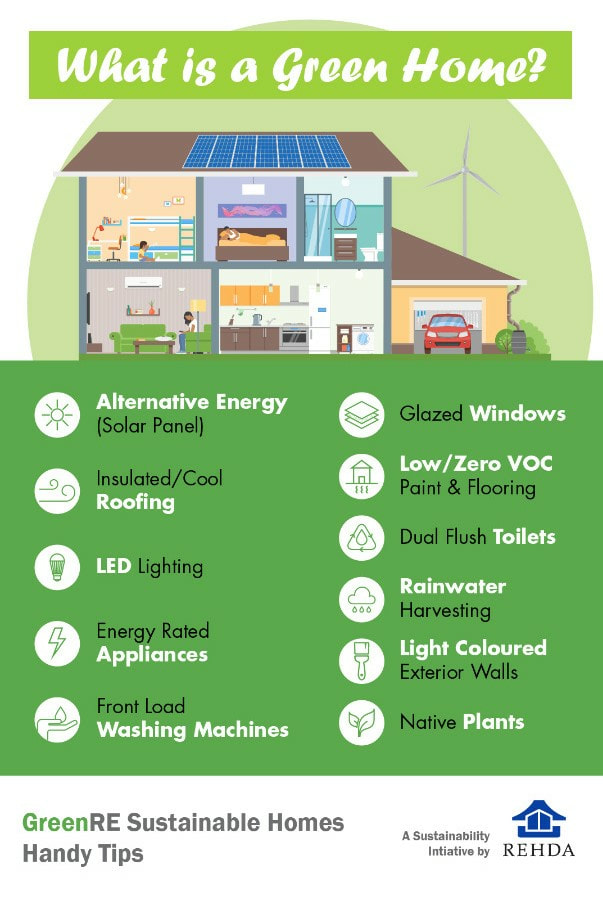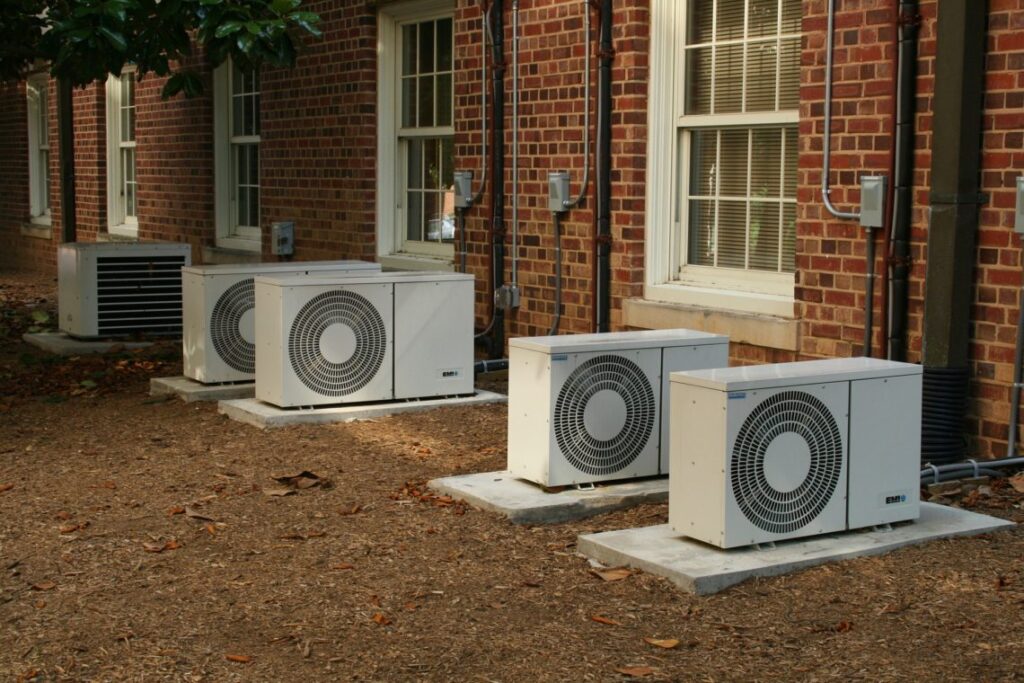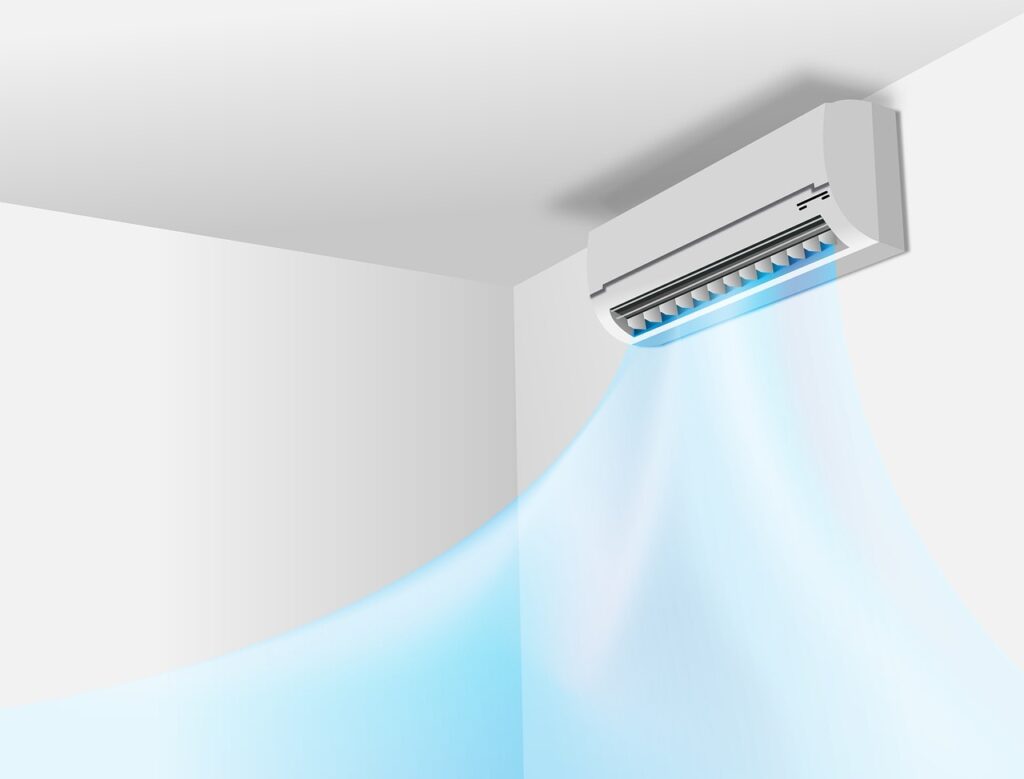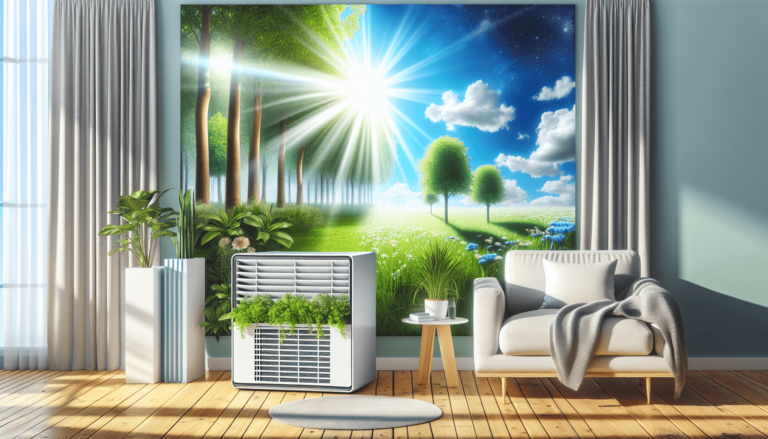

HVAC Services
Get Professional Repairs From The Area's Trusted HVAC Technicians. Ask About Our Services! We Offer Professional Heating & Cooling System Repairs And Guarantee Long-Lasting Results.
Got Question? Call us: (850) 678-2665Financing
The Green Guide: Eco-Friendly HVAC Settings And Usage
Discover practical tips to optimize energy efficiency and reduce environmental impact with eco-friendly HVAC settings and usage. Create a greener home environment and enjoy a cozy and sustainable living space. Get your own The Green Guide: Eco-Friendly HVAC Settings And Usage today.

In “The Green Guide: Eco-Friendly HVAC Settings And Usage,” discover how you can reduce your environmental impact while still keeping your home comfortable. By making small adjustments to your HVAC settings and usage, you can optimize energy efficiency and contribute to a greener future. From adjusting your thermostat to considering insulation upgrades, this guide will provide you with practical tips and recommendations to help you create a more eco-friendly home environment. So why not make a positive change for the planet while enjoying a cozy and sustainable living space? Just remember, every small step counts!
1. Energy-efficient HVAC Systems
1.1 Benefits of energy-efficient HVAC systems
Energy-efficient HVAC (Heating, Ventilation, and Air Conditioning) systems offer a plethora of benefits for both the environment and your wallet. By opting for an energy-efficient system, you can significantly reduce your carbon footprint and save on your energy bills. These systems are designed to consume less energy while providing optimal comfort and air quality. They are typically equipped with advanced features like variable speed motors, smart thermostats, and zoning capabilities, which allow you to customize and control your indoor climate more efficiently.
1.2 Types of energy-efficient HVAC systems
When it comes to energy-efficient HVAC systems, there are several options to choose from, depending on your specific needs and preferences. One popular choice is a high-efficiency furnace, which uses advanced combustion techniques and heat exchangers to maximize fuel utilization and minimize waste. Another option is a heat pump, which provides both heating and cooling by transferring heat between the indoors and outdoors. Heat pumps are incredibly energy-efficient as they only move heat instead of generating it. Additionally, geothermal HVAC systems utilize the natural heat stored in the ground to effectively heat and cool your home.
1.3 Factors to consider when choosing an energy-efficient HVAC system
Selecting the right energy-efficient HVAC system for your home involves considering several crucial factors. Firstly, you need to assess your home’s size and insulation levels to determine the appropriate system size. An undersized or oversized system can lead to inefficiency and discomfort. Additionally, pay attention to the system’s energy efficiency ratings, such as the SEER (Seasonal Energy Efficiency Ratio) for cooling and AFUE (Annual Fuel Utilization Efficiency) for heating. Look for systems with higher ratings to ensure optimal energy savings. Lastly, consider the cost, maintenance requirements, and warranty offered by different manufacturers and models before making your final decision.
2. Optimal Temperature Settings
2.1 Setting the thermostat for energy savings
One of the simplest ways to conserve energy and reduce HVAC costs is by setting your thermostat to energy-saving temperature settings. During the winter months, aim for a temperature between 68-72°F (20-22°C) while you’re at home, and lower it by a few degrees when you’re asleep or away. In the summer, set your thermostat to a higher temperature, around 74-78°F (23-26°C), and use fans or natural ventilation to supplement cooling. Investing in a programmable thermostat allows you to automatically adjust the temperature based on your schedule, ensuring energy efficiency without sacrificing comfort.
2.2 Optimal temperature settings for different seasons
To strike the perfect balance between comfort and energy savings, it’s important to adjust your thermostat settings according to the season. During the winter, lower your thermostat by a few degrees and wear warm clothing to stay cozy. In the summer, raise the temperature a bit and utilize ceiling fans or portable fans to circulate cool air. It’s essential to find your preferred comfort level while being mindful of energy consumption. Experiment with different settings to determine what works best for you and your household.
2.3 Using programmable thermostats
Programmable thermostats provide an excellent solution for optimizing temperature settings and maximizing energy efficiency. These smart devices allow you to schedule temperature changes based on your daily routine and lifestyle. For example, you can set your thermostat to automatically decrease or increase the temperature shortly before you wake up or arrive home, ensuring a comfortable environment while also minimizing energy waste. Many programmable thermostats also provide energy consumption data, helping you monitor and adjust your HVAC usage habits for even greater efficiency.

This image is property of www.greenre.org.
3. Proper Insulation
3.1 Importance of proper insulation
Proper insulation plays a vital role in maintaining an energy-efficient HVAC system. Insulation acts as a barrier against heat transfer, preventing excessive heat gain during the summer and heat loss during the winter. It helps your HVAC system work more efficiently by reducing the strain on it to maintain a comfortable temperature indoors. Good insulation also enhances indoor air quality by minimizing the infiltration of outdoor pollutants and allergens.
3.2 Insulating the attic and walls
Insulating your attic is a key step in improving the overall energy efficiency of your HVAC system. Heat tends to rise, and without adequate insulation in the attic, it can escape through the roof, leading to increased energy consumption. By insulating the attic, you can prevent heat loss in the winter and heat gain in the summer, helping your HVAC system operate more efficiently. Similarly, insulating exterior walls can further enhance energy efficiency by reducing heat transfer through the walls.
3.3 Weatherstripping doors and windows
In addition to insulating the attic and walls, it’s essential to address any air leaks around doors and windows. Weatherstripping is a cost-effective solution that helps seal gaps and cracks, preventing unwanted air infiltration. It not only improves energy efficiency but also enhances indoor comfort by reducing drafts and cold spots. Weatherstripping options include adhesive-backed foam tape, door sweeps, and window films. Regularly inspect and replace weatherstripping as needed to ensure optimal performance.
4. Air Filter Maintenance
4.1 Regularly replacing air filters
Maintaining clean air filters is crucial for the proper functioning of your HVAC system and ensuring optimal energy efficiency. Over time, air filters can become clogged with dust, pollen, and other airborne particles, hindering airflow and forcing your system to work harder. As a general rule of thumb, it’s recommended to replace disposable filters every 1-3 months, depending on usage and air quality. Permanent filters can be washed and reused, but they require regular cleaning according to the manufacturer’s instructions.
4.2 Choosing eco-friendly air filters
When selecting air filters, opt for eco-friendly options that help improve indoor air quality while reducing environmental impact. Look for filters with a high MERV (Minimum Efficiency Reporting Value) rating, as they capture a greater percentage of airborne particles. Consider options like electrostatic filters, which use a static charge to attract and trap debris, or pleated filters that offer a larger surface area for improved filtration efficiency. Additionally, explore filters made from recyclable or biodegradable materials for a more sustainable choice.
4.3 Air filter maintenance tips
Besides regular filter replacements, proper air filter maintenance contributes to the efficiency and longevity of your HVAC system. Make it a habit to clean or replace filters before the start of each heating or cooling season. Inspect filters periodically and remove any visible dirt or debris. Additionally, ensure that the filter is installed correctly with the airflow direction indicated on the filter frame. Regularly cleaning or replacing filters not only improves energy efficiency but also helps maintain good indoor air quality by removing pollutants and allergens.

This image is property of www.newamericanfunding.com.
5. Ventilation Strategies
5.1 Natural ventilation techniques
Proper ventilation is essential for maintaining healthy indoor air quality and reducing the energy load on your HVAC system. Natural ventilation techniques leverage outdoor air movement to ventilate your home. Opening windows and doors strategically to create cross-ventilation can promote air circulation, allowing fresh air to enter and stale air to exit. Utilizing natural ventilation during mild weather conditions can help reduce the need for mechanical cooling or heating, saving energy and promoting a comfortable living environment.
5.2 Using mechanical ventilation systems
In some situations, natural ventilation may not be sufficient. Mechanical ventilation systems provide a reliable and controlled way to introduce fresh air into your home. There are various types of mechanical ventilation systems, including exhaust ventilation, supply ventilation, and balanced ventilation. Exhaust ventilation systems expel stale air from specific areas, while supply ventilation systems bring in fresh air from the outdoors. Balanced ventilation systems combine both exhaust and supply ventilation, ensuring a balanced airflow throughout the home.
5.3 Balancing ventilation with energy efficiency
While ventilation is essential for indoor air quality, it’s important to strike a balance between ventilation and energy efficiency. Opening windows and doors indiscriminately during extreme weather conditions can strain your HVAC system, leading to increased energy consumption. To maintain a balance, it’s crucial to understand the prevailing weather conditions, outdoor air quality, and follow recommended guidelines for ventilation rates. Utilizing mechanical ventilation systems with energy-efficient technologies, such as heat recovery ventilation (HRV) or energy recovery ventilation (ERV), can further enhance energy efficiency while ensuring adequate ventilation.
6. Air Duct Sealing
6.1 Importance of air duct sealing
The efficiency of your HVAC system heavily relies on properly sealed air ducts. Air duct leaks can significantly impact energy consumption and indoor comfort by allowing conditioned air to escape into unconditioned areas like attics or crawl spaces. Sealing air duct leaks prevents energy waste, reduces ductwork pressure imbalances, and ensures that the conditioned air reaches its intended destination efficiently. Additionally, sealing air ducts can improve indoor air quality by preventing the infiltration of dust, pollutants, and allergens from outside.
6.2 Identifying and sealing air duct leaks
Identifying and sealing air duct leaks is a relatively straightforward process that can yield substantial energy savings. Start by visually inspecting the visible ductwork for any obvious leaks, such as gaps or loose connections. Pay attention to joints, elbows, and connections to registers. You can use hand feel or smoke tests to detect subtle leaks. Once identified, seal the leaks using mastic sealant, foil tape, or aerosol sealants recommended for ductwork. For larger or more complex leaks, professional assistance may be required to ensure proper sealing.
6.3 Professional air duct sealing
While DIY air duct sealing can be effective for smaller leaks, professional air duct sealing provides a more comprehensive solution. HVAC professionals employ specialized techniques such as duct testing and aeroseal sealing technology to identify and seal air duct leaks with precision. Duct testing involves pressurizing the duct system to identify leaks using advanced equipment. Aeroseal technology utilizes aerosolized sealant particles that are blown into the ducts and adhere to the leak edges, effectively sealing them. Professional air duct sealing ensures maximum energy efficiency and minimizes the risk of missed leaks.

This image is property of www.greenlivingpdx.com.
7. Zoning Systems
7.1 How zoning systems work
Zoning systems allow you to divide your home into different zones, each with its independent temperature control. By utilizing motorized dampers within the ductwork and multiple thermostats, zoning systems direct conditioned air to specific zones as needed, rather than conditioning the entire home uniformly. This targeted approach provides greater control over indoor comfort and allows you to allocate heating or cooling where it’s needed most, which can lead to substantial energy savings.
7.2 Benefits of zoning systems
Zoning systems offer several benefits beyond energy efficiency. By customizing the temperature settings for different zones, you can accommodate individual preferences and eliminate temperature conflicts within the household. Zoning also allows you to focus heating or cooling on frequently occupied areas, such as living rooms during the day and bedrooms at night. This results in enhanced comfort and reduced HVAC equipment runtime, leading to potential energy savings and prolonged equipment lifespan.
7.3 Installing and using zoning systems
Installing a zoning system typically involves retrofitting your existing HVAC system with the necessary components. It’s crucial to consult with a professional HVAC contractor to assess your home’s layout, ductwork configuration, and compatibility with zoning systems. They can recommend the appropriate zoning equipment and ensure proper installation and integration. Once installed, familiarize yourself with the operation of the zoning system, including setting temperature schedules for different zones and adjusting damper positions as needed. Regularly monitor and fine-tune the system to achieve optimum comfort and efficiency.
8. Renewable Energy Integration
8.1 Incorporating renewable energy sources
Integrating renewable energy sources with your HVAC system can significantly reduce your dependence on fossil fuels and contribute to a greener and more sustainable future. Solar panels are a popular choice for homeowners looking to harness the sun’s energy for electricity generation. By connecting your HVAC system to solar panels, you can power the system using clean, renewable energy, reducing your carbon footprint and energy bills. Additionally, you can explore wind turbines or small hydropower systems as alternative renewable energy sources.
8.2 Solar-powered HVAC systems
Solar-powered HVAC systems are an excellent option for homeowners seeking to maximize energy efficiency and embrace renewable energy. These systems utilize solar thermal energy to power the heating, cooling, and ventilation components of the HVAC system. Solar collectors capture and concentrate solar energy, which is then used to generate heat or cooling through various technologies like absorption chillers or heat pumps. By harnessing the sun’s energy directly, solar-powered HVAC systems achieve remarkable energy savings and minimize environmental impact.
8.3 Geothermal heating and cooling
Geothermal heating and cooling systems offer another eco-friendly approach to HVAC. These systems harness the consistent, renewable thermal energy stored in the ground to provide heating, cooling, and hot water. Geothermal heat pumps use underground loops filled with refrigerant to transfer heat between the ground and your home. In the winter, they extract heat from the ground and distribute it indoors, while in the summer, they remove heat from your home and release it into the ground. Geothermal HVAC systems are highly efficient, cost-effective, and have minimal environmental impact.

This image is property of greenerideal.com.
9. Maintenance and Servicing
9.1 Importance of regular HVAC maintenance
Regular maintenance is essential for keeping your HVAC system operating at peak performance and maximizing energy efficiency. Properly maintained systems are less likely to experience breakdowns, consume less energy, and have a longer lifespan. Regular upkeep also ensures that your system continues to deliver optimal indoor air quality and comfort. HVAC professionals can perform routine maintenance tasks such as cleaning, lubricating, and inspecting components, as well as address any potential issues before they escalate.
9.2 DIY maintenance tasks
While professional maintenance is essential, there are some maintenance tasks you can perform yourself to supplement regular servicing. Start by keeping the area around your outdoor unit clean and free from debris. Routinely check and clean your air filters to promote proper airflow. Inspect the vents and registers for any obstruction and ensure they are open and unobstructed. Additionally, consider scheduling regular visual inspections to identify any visible leaks, signs of wear, or unusual noises. However, it’s crucial to leave complex tasks and repairs to trained HVAC technicians.
9.3 Professional servicing and tune-ups
Professional servicing and tune-ups should be scheduled at least once a year, ideally before the start of each heating or cooling season. HVAC technicians have the expertise and tools to perform comprehensive system checks, including cleaning coils, checking refrigerant levels, and verifying electrical connections. They can also calibrate thermostats, identify and address any performance issues, and offer recommendations for improving energy efficiency. Investing in professional servicing and tune-ups not only ensures your system’s reliability but also safeguards your warranty coverage.
10. Tips for Efficient HVAC Usage
10.1 Using ceiling fans to increase efficiency
Ceiling fans can be a valuable resource for enhancing HVAC efficiency. During warmer months, set your ceiling fans to rotate counterclockwise to create a wind-chill effect, making you feel cooler without needing to lower the thermostat temperature. In the winter, reverse the direction of the fan to clockwise so that it circulates warm air trapped near the ceiling back down into the room. By utilizing ceiling fans in conjunction with your HVAC system, you can reduce energy consumption and maintain comfort.
10.2 Managing humidity levels
Proper humidity management is vital for maintaining optimal comfort and energy efficiency. High humidity can make a room feel warmer, leading to increased cooling needs. Conversely, low humidity can make the room feel cooler, resulting in higher heating requirements. Use dehumidifiers in humid climates to remove excess moisture and reduce the workload on your HVAC system. In drier climates, consider incorporating humidifiers to add moisture to the air, preventing discomfort and potential health issues caused by excessively dry indoor air.
10.3 Closing vents in unused rooms
Closing vents in rooms that are not frequently used can help redirect conditioned air to more occupied areas, thereby improving energy efficiency. However, it’s important to exercise caution when closing vents, as it can affect the overall balance and efficiency of the HVAC system. Too many closed vents can lead to increased pressure in the ductwork, potential system damage, or decreased overall efficiency. Consult with an HVAC professional to determine the optimal number of vents to close based on your system’s design and performance.
In conclusion, adopting energy-efficient HVAC practices and utilizing the right technologies can have a significant impact on both your environmental footprint and your energy bills. By investing in energy-efficient HVAC systems, setting optimal temperature settings, ensuring proper insulation, regularly maintaining air filters, utilizing ventilation strategies, sealing air ducts, considering zoning systems, integrating renewable energy sources, performing regular maintenance and servicing, and implementing efficient HVAC usage tips, you can create a more eco-friendly and cost-effective home environment. Remember to consult with HVAC professionals for expert guidance and support throughout the process.





